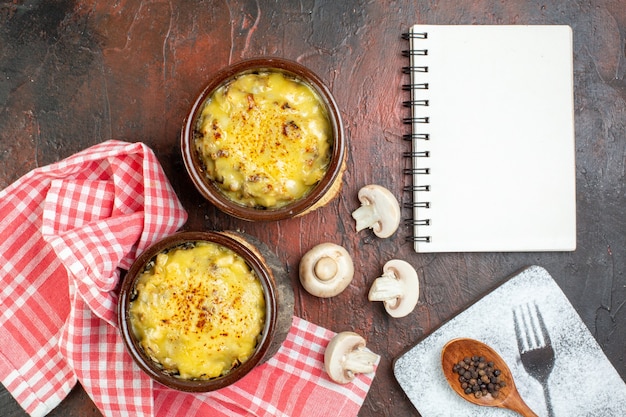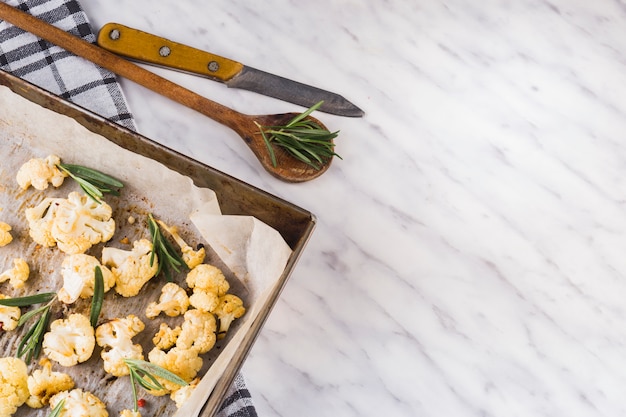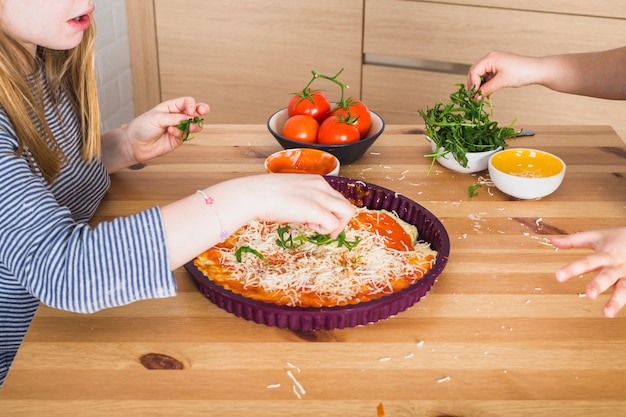Right, so you've decided to tackle the mighty breakfast casserole, eh? Good on you! It's a real crowd-pleaser, especially for those lazy weekend mornings where you just want something comforting and tasty without too much fuss. But let's be honest, the one thing that can be a bit daunting is getting the cook time just right. You don't want a soggy mess or a dry brick, do you? That's where I come in.
I've been there, done that - burnt a few casseroles in my time, I have. But I've learned a thing or two along the way, and I'm here to share those tips with you. This guide will break down everything you need to know about achieving breakfast casserole perfection, from understanding the different types of casseroles to nailing the perfect cook time. We'll explore the vital role of texture and ingredients, discuss essential techniques, and dive into specific cook times for various casserole variations.
(Part 1) Understanding the Basics: What Makes a Good Breakfast Casserole?
The Importance of Texture: The Key to a Delicious Casserole

Let's be real, a breakfast casserole is all about texture. It's not just about taste, but about the delightful interplay of different sensations in your mouth. You want a nice, crispy top with a soft, fluffy inside, and a layer of cheesy goodness holding it all together. You don't want it to be too dry or too wet. It's a delicate dance, my friend!
The Casserole Chronicles: My Personal Journey to Texture Perfection
Honestly, I used to think a breakfast casserole was just a simple dish, but I've realised over the years that there's more to it than meets the eye. I've learned the hard way that the right ingredients, the right ratios, and the right cooking method are key. For example, I used to use too much bread and not enough cheese, which left me with a dry, crumbly disaster. It was a bit of a trial and error process, but I eventually found the perfect recipe. Now, I always try to achieve a balance between the crispy exterior and the fluffy interior.
The Role of Ingredients: Choosing the Right Building Blocks

The beauty of a breakfast casserole is that you can be as creative as you like with the ingredients. But there are a few staples that work wonders:
- Bread: The bread forms the base of your casserole, so choose a sturdy variety that can withstand the baking process without becoming too soggy. Thick-sliced bread or even rolls work well. You can even get creative with croissants or brioche for a decadent twist.
- Eggs: Eggs are the binding agent that holds everything together and gives the casserole its fluffy texture. Don't skimp on the eggs! You can use whole eggs, or experiment with adding egg whites for a lighter option.
- Cheese: The cheese is the star of the show, adding a creamy, cheesy flavour that everyone loves. Use a blend of cheeses like cheddar, Monterey Jack, and Gruyère for a really delicious flavour profile. You can also experiment with different cheeses depending on your flavour preferences – consider sharp cheddar for a tangy kick, or brie for a creamy, luxurious touch.
- Vegetables: Adding vegetables like chopped peppers, onions, or spinach can add colour, flavour, and nutrients to your casserole. Think about the flavors you want to achieve: peppers for a touch of sweetness, onions for some savory depth, or mushrooms for an earthy note.
- Meat: You can add bacon, sausage, or ham for a hearty and flavourful meal. The type of meat you choose will greatly impact the flavor of your casserole. Bacon adds smoky saltiness, sausage brings a spicy kick, and ham offers a delicate, savory taste.
Key Techniques for a Perfect Cook: Mastering the Art of Baking

Now, let's talk about the actual cooking process. This is where it gets a bit more technical, but trust me, it's not as complicated as it seems.
Preheating is King: Setting the Stage for Success
Always preheat your oven before you start cooking. This ensures the casserole cooks evenly and doesn't get soggy. I usually preheat my oven to 350°F (175°C), but you can adjust it based on your recipe.
Choosing the Right Baking Dish: Finding the Perfect Vessel
The baking dish you use can make a big difference. Opt for a casserole dish that is about 9x13 inches. This size is perfect for a standard recipe and will give your casserole plenty of room to bake evenly. I prefer using a glass dish, as it allows you to see how the casserole is browning, but you can also use a metal one.
Covering Your Casserole: Preventing a Dry Top
Covering your casserole with foil for the first part of the cooking time helps to prevent the top from drying out. This will give your casserole a nice, fluffy texture. Once the casserole is nearly done, remove the foil to allow the top to brown and get crispy.
The Art of Checking for Doneness: Knowing When it's Ready
The best way to tell if your casserole is done is to insert a toothpick or a knife into the centre. If it comes out clean, then you're good to go. If it comes out with some egg mixture clinging to it, then give it a few more minutes in the oven.
Using a Thermometer for Accuracy: Ensuring Perfect Doneness
If you're really keen to get the cook time spot on, you can use a meat thermometer. Just insert the thermometer into the centre of the casserole and make sure the internal temperature reaches 160°F (71°C). This ensures that the eggs are cooked through and that the casserole is safe to eat.
(Part 2) The Big Reveal: Cook Time and Casserole Variations
Delving into Cook Time: A Guide to Timing Perfection
Right, so the big question is: how long do you cook it for? The answer, my friend, is it depends! It really depends on the type of casserole you're making. You need to think about the ingredients and the size of your casserole dish.
The Average Cook Time: A General Guideline
Generally speaking, a standard breakfast casserole will take about 45 minutes to an hour to cook. But it's always a good idea to check for doneness a few minutes before the recommended time just to be safe. I always err on the side of caution!
Factors Affecting Cook Time: Understanding the Variables
The cook time can be influenced by several factors:
The amount of bread: More bread means a longer cooking time.
The type of bread: Heavier bread like sourdough will take longer to cook than lighter bread like brioche.
The size of the casserole dish: A larger dish will require a longer cooking time.
The number of eggs: More eggs will increase the cooking time.
The density of the filling: A casserole with a lot of meat or vegetables will take longer to cook than one with less filling.
Unveiling the Variations: Exploring Different Casserole Styles
Don't think of breakfast casseroles as just one recipe, they come in all shapes and sizes! Here are some common types with their estimated cook times:
The Classic Casserole: A Time-Tested Favourite
The classic casserole is usually made with bread cubes, eggs, cheese, and often bacon or sausage. It's a classic for a reason! Cook time: 45-60 minutes.
The Hash Brown Casserole: A Crispy Treat
This casserole features crispy hash browns, eggs, cheese, and your choice of meat. The crispy hash browns add a lovely texture contrast. Cook time: 40-50 minutes.
The Overnight Casserole: A Make-Ahead Wonder
This casserole is perfect for those who love to meal prep. Simply assemble it the night before, cover it, and bake in the morning. It's a real lifesaver! Cook time: 40-50 minutes.
The Spinach and Feta Casserole: A Mediterranean Delight
This light and flavourful casserole features spinach, feta cheese, and sometimes sun-dried tomatoes. It's a great option for those who are looking for a healthier breakfast. Cook time: 30-40 minutes.
The Sweet Casserole: A Breakfast Indulgence
Yes, you can even make a sweet breakfast casserole! This version usually features cinnamon rolls, cream cheese, and often berries. It's a real treat! Cook time: 30-40 minutes.
The Savory French Toast Casserole: A Delicious Alternative
Another delicious option is the savory French toast casserole. This casserole uses challah bread soaked in a mixture of eggs, milk, and spices, then baked with savory ingredients like spinach, cheese, and bacon. Cook time: 35-45 minutes.
(Part 3) Mastering the Casserole: Tips and Tricks for Success
Don't Overcook! The Perils of Over-Baking
One of the biggest mistakes people make with breakfast casseroles is overcooking them. Remember, a dry, overcooked casserole is not a pleasant experience. The best way to avoid overcooking is to check for doneness regularly and take it out of the oven as soon as it's done.
The Importance of Resting: Letting the Casserole Settle
Once your casserole is cooked, let it rest for about 10 minutes before cutting into it. This allows the casserole to set and prevents it from falling apart when you slice it. It's a small detail, but it makes a big difference.
Freezing Your Casserole for Later: Saving Time and Effort
You can freeze leftover casserole or even make it ahead of time and freeze it before baking. To freeze, let the casserole cool completely before placing it in a freezer-safe container. You can bake it from frozen, but just add an extra 10-15 minutes to the cook time.
Creating a Beautiful Presentation: A Feast for the Eyes
Don't forget the presentation! A beautifully presented breakfast casserole is always a crowd-pleaser. You can use a spatula to gently lift the casserole out of the dish and place it on a serving platter. You can then garnish it with fresh herbs, a sprinkle of cheese, or a dollop of sour cream.
The Power of Experimentation: Unleash Your Creativity
The beauty of breakfast casseroles is that you can really experiment with the ingredients. Try adding your favourite vegetables, meats, or cheeses to create your own unique casserole. Don't be afraid to get creative!
A Table of Casserole Combinations: Inspiring Your Next Creation
Here's a quick table outlining some popular breakfast casserole combinations and their estimated cook times:
| Combination | Ingredients | Cook Time |
|---|---|---|
| Classic Bacon and Cheese | Bread cubes, eggs, bacon, cheddar cheese | 45-60 minutes |
| Sausage and Pepper | Bread cubes, eggs, sausage, bell peppers, cheddar cheese | 45-60 minutes |
| Spinach and Feta | Bread cubes, eggs, spinach, feta cheese | 30-40 minutes |
| Ham and Potato | Bread cubes, eggs, ham, potatoes, cheddar cheese | 45-60 minutes |
| Chorizo and Black Bean | Bread cubes, eggs, chorizo sausage, black beans, cheddar cheese | 45-60 minutes |
| Mushroom and Swiss | Bread cubes, eggs, mushrooms, Swiss cheese | 40-50 minutes |
| Breakfast Burrito Casserole | Tortilla chips, eggs, ground beef, beans, salsa, cheese | 40-50 minutes |
(Part 4) From Beginner to Master: A Step-by-Step Guide
Your First Breakfast Casserole: A Recipe for Success
Here's a classic breakfast casserole recipe that is easy to follow and produces a delicious result:
Ingredients:
- 10 slices of thick-sliced bread, cubed
- 1/2 cup chopped onion
- 1/2 cup chopped green bell pepper
- 8 slices of bacon, cooked and crumbled
- 1 1/2 cups shredded cheddar cheese
- 6 large eggs
- 1 cup milk
- 1/4 teaspoon salt
- 1/4 teaspoon black pepper
Instructions:
- Preheat oven to 350°F (175°C).
- Grease a 9x13 inch casserole dish.
- In a large bowl, combine the bread cubes, onion, bell pepper, bacon, and cheese.
- In a separate bowl, whisk together the eggs, milk, salt, and pepper.
- Pour the egg mixture over the bread mixture and stir to combine.
- Pour the mixture into the prepared casserole dish.
- Bake for 45-60 minutes, or until the casserole is set and golden brown.
- Let the casserole rest for 10 minutes before serving.
Pro Tips for a Perfect Outcome
Tossing the Bread: Gently toss the bread cubes with a little butter or olive oil before adding the other ingredients. This will help the bread absorb the egg mixture and prevent it from getting too dry.
Draining the Bacon: Ensure the cooked bacon is drained well to prevent the casserole from becoming greasy.
Mixing the Cheese: You can also add some shredded mozzarella or Monterey Jack cheese for added flavour and creaminess. Just make sure you don't overload it with cheese!
FAQs
1. Can I use leftover bread for my casserole?
Absolutely! Leftover bread is perfect for a breakfast casserole. Just make sure it's not too stale or moldy! You can even use stale bread to create a more robust texture.
2. How long can I keep a breakfast casserole in the fridge?
You can keep a breakfast casserole in the fridge for up to 3 days. Just make sure you store it in an airtight container.
3. Can I freeze a breakfast casserole before baking it?
Yes, you can! Just assemble the casserole as instructed, cover it tightly with plastic wrap and foil, and freeze it for up to 3 months. When you're ready to bake it, thaw it in the refrigerator overnight and then bake as directed, adding an extra 10-15 minutes to the cook time.
4. What are some other ingredients I can add to my breakfast casserole?
The possibilities are endless! You can add things like chopped spinach, diced tomatoes, mushrooms, sausage, ham, or even some cooked ground beef. Just remember to adjust the cook time accordingly. Experiment with different combinations to find your favorite flavor profile.
5. Can I bake a breakfast casserole in a smaller dish?
You can use a smaller dish, but just make sure you adjust the cook time accordingly. If you're using a smaller dish, it will likely take less time to cook. Keep an eye on it and check for doneness regularly.
(Part 5) Beyond the Basics: Embracing Creativity
The Art of Personalization: Your Signature Casserole
Now that you've mastered the basics, it's time to let your creativity shine. Experiment with different ingredients, flavours, and techniques to create your own signature breakfast casserole.
Adding Texture and Flavour: Creating a Multi-Sensory Experience
Think about adding different textures and flavours to your casserole. You could use crispy hash browns, creamy ricotta cheese, or even some diced fresh herbs. Remember, a well-balanced casserole will have a mix of textures and flavours that complement each other.
Creating a Colourful Presentation: A Visual Delight
Don't be afraid to add some colour to your casserole! You can use brightly coloured bell peppers, spinach, or even some sliced cherry tomatoes. A visually appealing casserole is sure to impress your guests.
Using Leftovers for a Delicious Twist: Turning Leftovers into Treasures
Don't throw away those leftover roasted vegetables, cooked chicken, or even a bit of leftover pasta. You can add them to your breakfast casserole for a delicious and easy meal.
Exploring New Flavour Profiles: Expanding Your Culinary Horizons
Think outside the box! You can add a Mexican twist with some salsa, black beans, and Monterey Jack cheese. Or, you could create a Mediterranean-inspired casserole with feta cheese, spinach, and sun-dried tomatoes.
Conclusion: A Journey of Culinary Discovery
There you have it, folks! You now have all the tools you need to create the most delicious and perfect breakfast casserole. Remember, practice makes perfect, so don't be afraid to experiment and have fun with it. And who knows, maybe you'll even develop your own signature recipe that everyone will love! Now go forth, my culinary friends, and conquer the world of breakfast casseroles!
Everyone is watching

How to Cook Frozen Lobster Tails Perfectly: A Step-by-Step Guide
RecipesLobster. Just the word conjures up images of lavish meals, special occasions, and a taste of luxury. But let's...

Pigs in a Blanket Cooking Time: How Long to Bake for Perfect Results
RecipesAh, pigs in a blanket. Just the name conjures up images of those delightful little parcels of crispy pastry en...

Pork Fillet Cooking Time: How Long to Cook It Perfectly
RecipesPork fillet, or tenderloin as it's sometimes called, is a real favourite in our house. It's so versatile, and...

The Ultimate Guide to Tender, Juicy Pulled Pork
RecipesRight, let's talk pulled pork. It's one of those dishes that just screams "comfort food," doesn't it? I mean...

The Ultimate Guide to Cooking Sweet Potatoes: From Roasting to Mashing
RecipesSweet potatoes. Just the name conjures up images of warm, comforting dishes, bursts of vibrant color, and a to...
